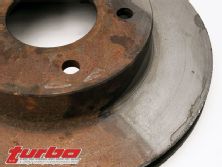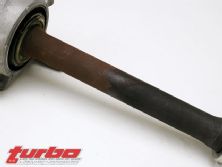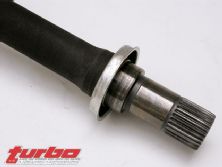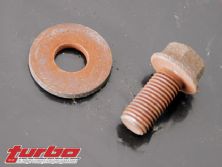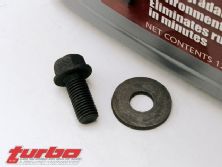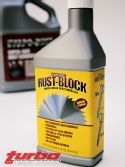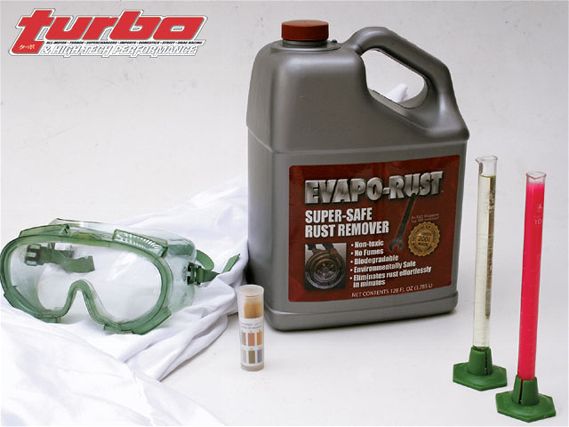 | Rust Removal - Garage
| Rust Removal - Garage
True enthusiasts wreak havoc on their cars, and they know it. It comes as no surprise then when they find little tread left after a day at the track or a scraped underside earned from an aggressive combination of damper stiffness and ride height. Chipped-up bumpers, seats timeworn from ingress and egress, bent control arms, and an interior embedded with the scent of high-octane race gas are what racing does. We see things wear out, most of the time with a watchful eye. Keeping tabs on tire tread disintegration over the course of several months isn't hard. But then there are those problems that cannot always be monitored, those that really don't make themselves known until the day something once expensive becomes worth very little - seemingly overnight. Problems caused by rust.
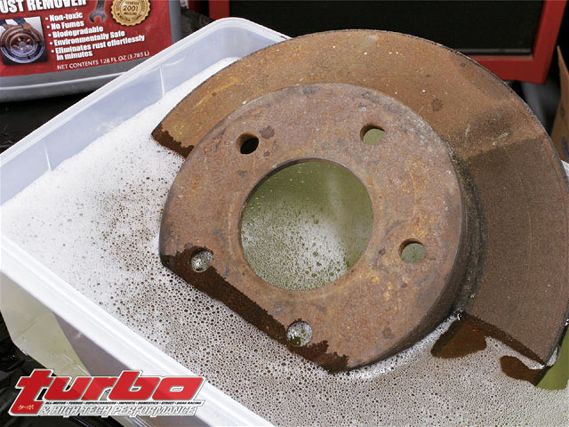 | Evapo-Rust is a clear, water-based solution. The best way to apply it is to soak the rusted object in the solution for anywhere from 10 minutes to a whole day, depending on the severity of oxidation.
| Evapo-Rust is a clear, water-based solution. The best way to apply it is to soak the rusted object in the solution for anywhere from 10 minutes to a whole day, depending on the severity of oxidation.
Rust is an oxide, a chemical compound that contains oxygen. It forms when iron is exposed to open-air oxidation, which is pretty much all the time. Rust is the buildup that cakes up on iron and its alloys like steel caused by the oxygen content present in the air and in water. Chemically, it looks like Fe2O3. Pure iron is rare since it reacts so easily with oxygen, that's where the oxygen part of the equation comes from. The corrosive, electrochemical rusting process starts with an easily oxidized piece of metal that wants to give away electrons (the anode), a liquid-like water to help the electrons move (an electrolyte), and another not so easily oxidized piece of metal that wants to take the electrons (a cathode). The anode and cathode can both be found on the same piece of metal. When corrosion happens, the electrolytes give oxygen to the anode, which sends electrons to the cathode, turning the metal of the anode into rust. When water comes into contact with iron it reacts with the air's carbon dioxide to become a weak carbonic acid. This process dissolves the iron and releases hydrogen and oxygen from the water, which makes iron oxide and disintegrates the expensive metal parts on your car. But rust is not an irreversible process - if it's caught in time.
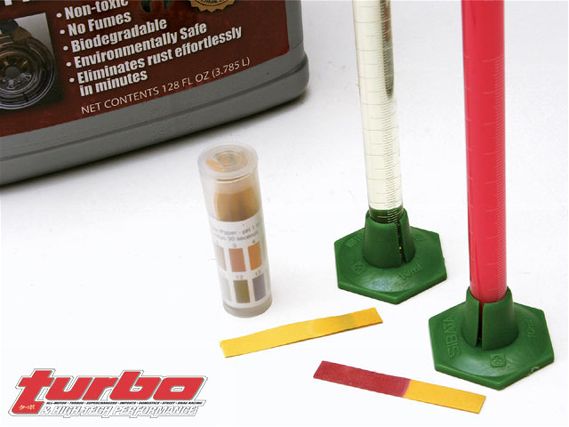 | We measured the acidity of Evapo-Rust (on the left) and another leading brand of rust remover (on the right). The pH level of the conventional rust remover on the right is not much less than battery acid. It goes without saying that caution must be taken when using products like these. Evapo-Rust measures in where water does.
| We measured the acidity of Evapo-Rust (on the left) and another leading brand of rust remover (on the right). The pH level of the conventional rust remover on the right is not much less than battery acid. It goes without saying that caution must be taken when using products like these. Evapo-Rust measures in where water does.
Rust removing products are not new and chances are you've had experiences with at least one of them. The problem with conventional rust removers though is that they're acid-based, meaning bad things happen when they come in contact with your skin or certain plastics, rubbers and even other metals. Whether you spray them on, brush them on or soak stuff in them, most aren't all that safe. Many aren't so environmentally friendly either, so they can't be disposed of down the drain and some can't even be shipped. Evapo-Rust is different. Since it's water-based, it's not only safe to touch it's eco-friendly. It also won't make you nauseous and it won't start a fire. You can even stick it in the mailbox and ship it. If you're smart, by now you might be wondering how something water-based can actually inhibit a destructive process that's caused partially by water in the first place. The process is known as "selective chelation," in which a large synthetic molecule forms a bond with metal and holds it in a solution. The bond is just strong enough to remove iron from iron oxide, but too weak to remove it from pure iron. Clever. With Evapo-Rust, this bond selectively occurs in the iron oxide compound, not in the pure steel part you care about. Once the iron has been separated, a sulfur-bearing organic molecule pulls the iron from the chelator forming ferric sulfate, which remains water-soluble. This process allows the chelating agent to keep separating iron from the rust.
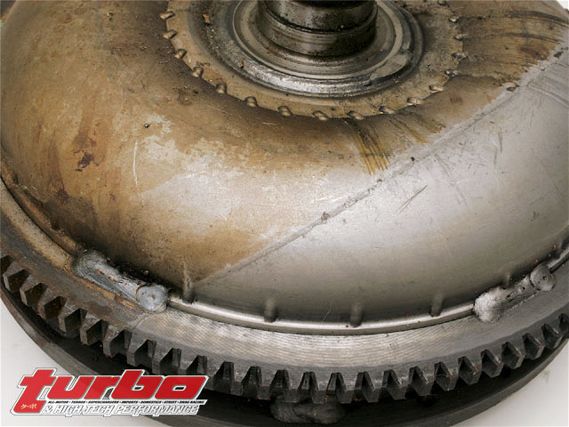 | Submerging objects in the solution allows rust to easily be removed from small crevices like in between flywheel and torque converter teeth.
| Submerging objects in the solution allows rust to easily be removed from small crevices like in between flywheel and torque converter teeth.
Using Evapo-Rust is easy. There's no scraping involved, no wire brushing, and no work really - only waiting. Just fill a container with Evapo-Rust high enough to fully submerge the rusted component. Don't worry about submerging non-rusted pieces or dissimilar materials - Evapo-Rust won't affect these at all. Let it sit for anywhere from 10 minutes to overnight, depending on the severity of the rust buildup, and then take it out. If rust remains in any cracks or crevices just stick the part back in and repeat the process. For extra protection against future corrosion, quickly dip the piece back in the solution and allow it to air dry. Once all of the rust is removed, wash the piece with water and store the Evapo-Rust away for next time. After several uses the Evapo-Rust will lose its effectiveness; when that happens just pour it down the drain. Really, it's okay.
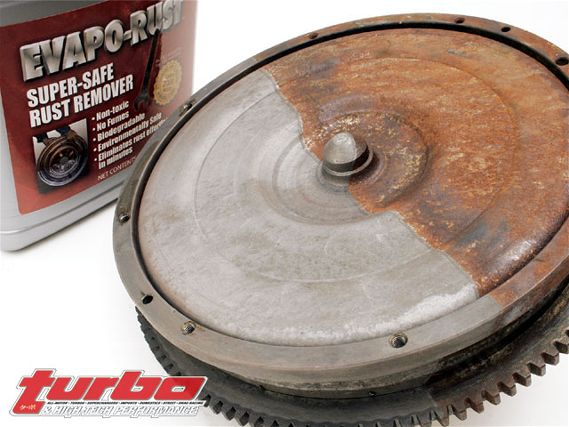 | A few hours in the Evapo-Rust bath and this is what we got. No scraping or scrubbing.
| A few hours in the Evapo-Rust bath and this is what we got. No scraping or scrubbing.
Evapo-Rust also manufactures a number of other anti-corrosion products designed to replenish and protect not just iron and iron alloys but aluminum and its alloys also, so there's really no excuse to have that rusted-up radiator mount or crusty, oxidized control arm, that is, at least once you find out it's rusting in the first place.

